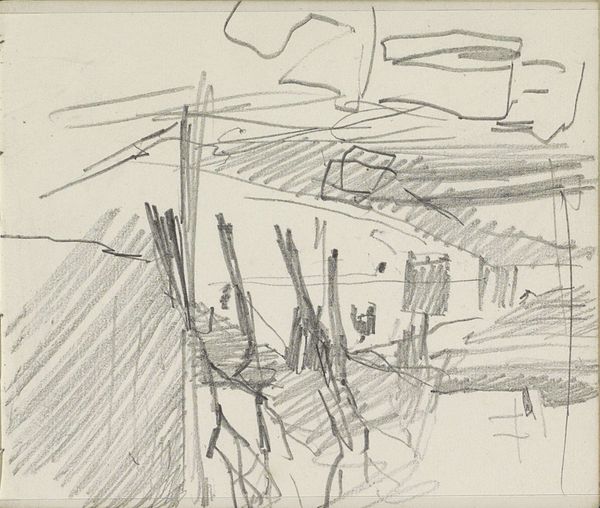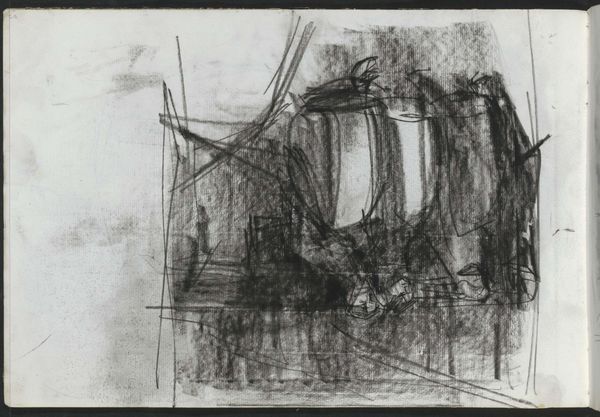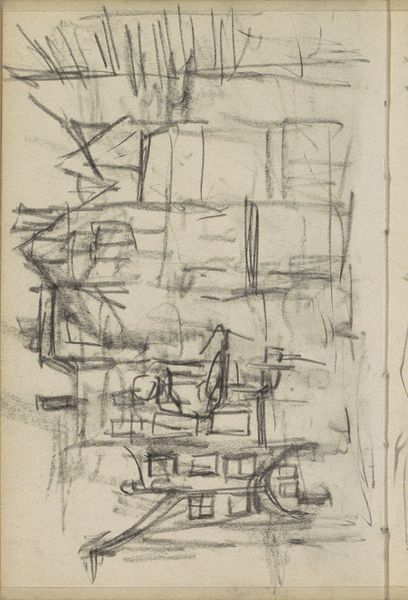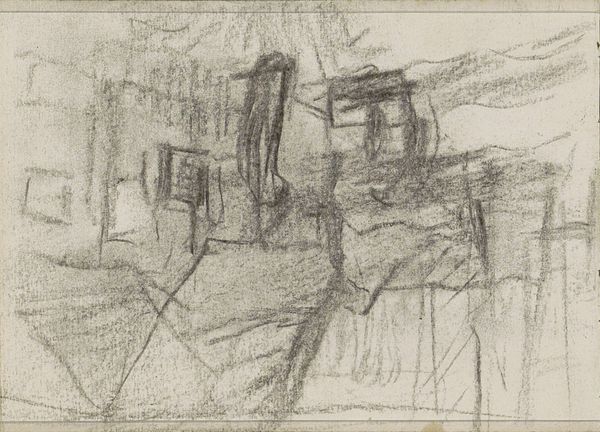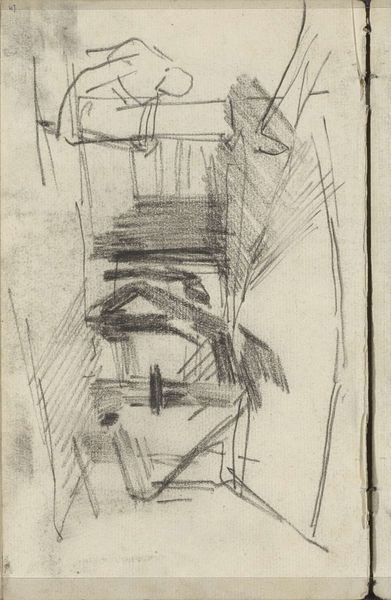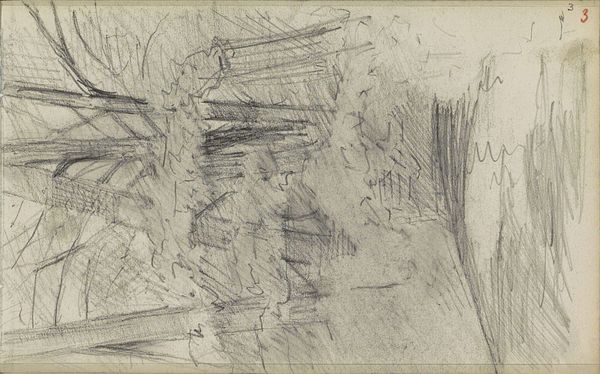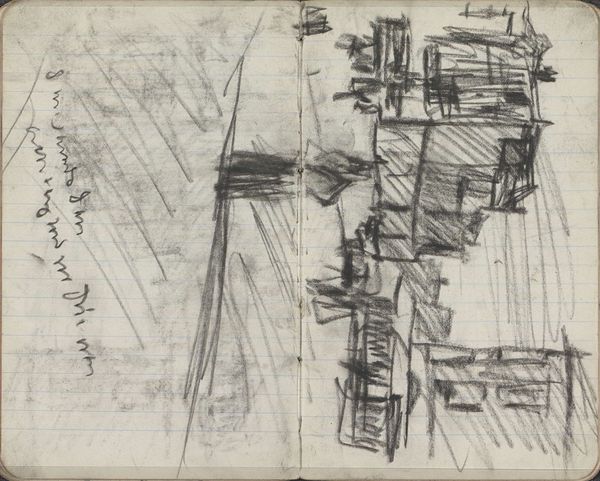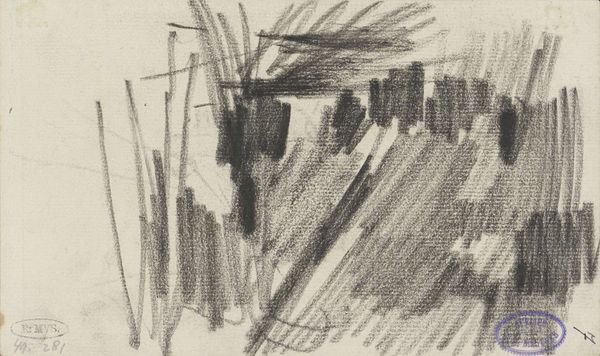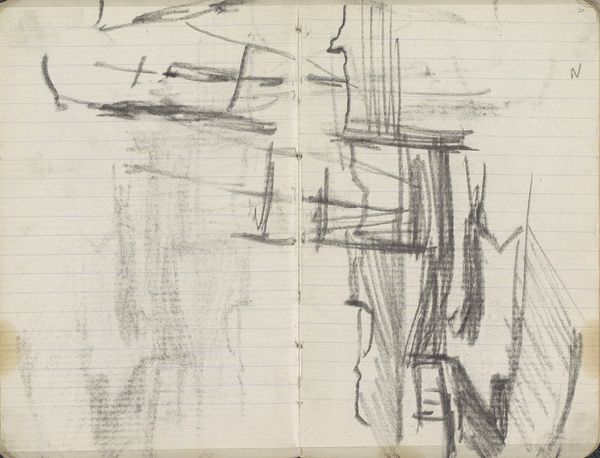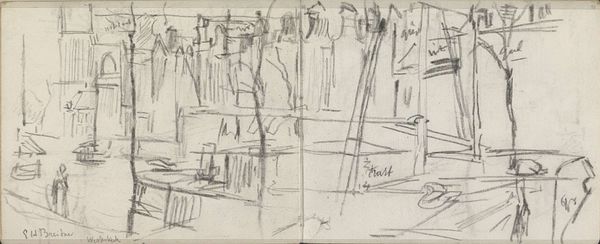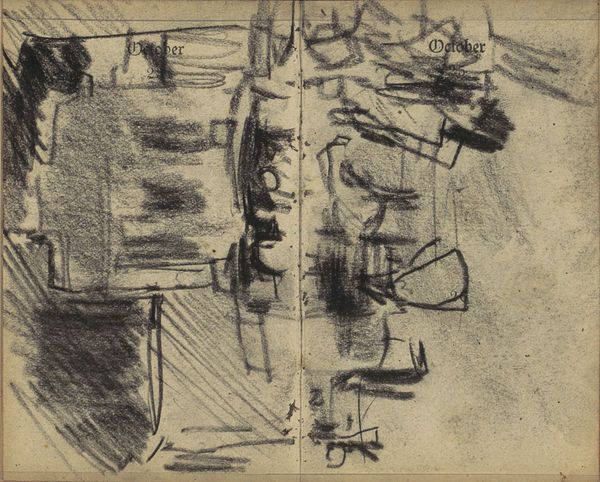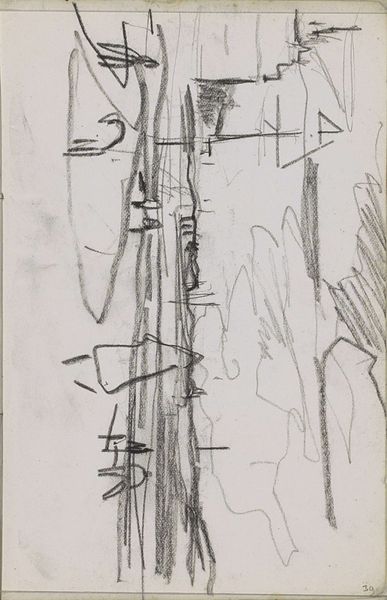
Copyright: Rijks Museum: Open Domain
Editor: Here we have Isaac Israels’ pencil and graphite drawing, "Gezicht op een brug, mogelijk te Amsterdam", dating roughly from 1875 to 1934 and now residing at the Rijksmuseum. There’s such spontaneity in the sketch-like quality – it feels like a captured moment. What can you tell us about its historical or cultural relevance? Curator: Israels captured a moment in the burgeoning industrial age. How does this depiction of the city contrast with earlier, more idealized representations of Amsterdam? The stark lines and emphasis on form, foregoing sentimentality, point towards the rise of modernism. What statements might Israels be making about the rapid changes within Amsterdam, perhaps about its working class? Editor: So, you're suggesting the roughness could be intentional, a commentary on social change? I had mostly just taken it as part of the Impressionist style. Curator: Exactly. Remember that Impressionism wasn't just about fleeting beauty. Many artists used it to capture modern life. Now consider this drawing's potential function within the market—would this have been intended as a piece of social critique or preliminary material? How might its potential role influence how we see it? Editor: I see what you mean. Thinking about it less as a polished piece and more as a study changes my perspective. It makes me wonder if he wanted to depict the raw, unfinished aspects of city life too. Curator: Precisely. Israels prompts us to consider what aspects of city life are presented – and *not* presented - in conventional landscape artwork, especially at a time of such dynamic social and political change. Editor: Thanks! This gives me so much more to consider than just its aesthetic appeal. Curator: It certainly shifts our understanding of Impressionism. Art always serves as documentation of moments in society and in culture.
Comments
No comments
Be the first to comment and join the conversation on the ultimate creative platform.
